Elimination
Elimination
Urinary Elimination
Urinary elimination is a fundamental aspect of patient care that involves ensuring proper bladder function and the effective removal of waste products from the body. As a nurse, providing care for patients with urinary elimination challenges requires understanding normal and abnormal urinary patterns, implementing catheterization techniques, bladder training, and managing incontinence.
Catheterization
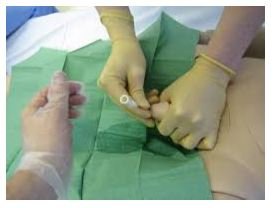
Catheterization is the process of inserting a catheter into the bladder to drain urine, often necessary when a patient cannot void on their own. Catheterization can be either intermittent or indwelling (foley), depending on the patient’s needs.
Insertion and Care of Indwelling Catheters
Indwelling catheters (Foley catheters) are inserted into the bladder and left in place to continuously drain urine. This procedure is often performed in patients who are unable to void naturally due to medical conditions like urinary retention, surgeries, or neurological disorders.
Procedure for Insertion of an Indwelling Catheter
i. Preparation:
- Gather necessary supplies: sterile catheter kit, gloves, antiseptic solution, lubricant, and collection bag.
- Explain the procedure to the patient to reduce anxiety and gain cooperation.
- Ensure privacy and position the patient correctly (supine for females, supine with legs slightly apart for males).
ii. Sterile Technique:
- Perform hand hygiene and don sterile gloves.
- Cleanse the urinary meatus with antiseptic solution using sterile cotton balls or swabs.
- Lubricate the catheter tip to ease insertion.
iii. Insertion:
- Gently insert the catheter into the urethra until urine flows.
- For males, insert 6-9 inches of the catheter; for females, 2-3 inches.
- Once urine flows, advance the catheter another inch to ensure proper placement.
- Inflate the balloon with sterile water to secure the catheter in place.
iv. Post-insertion care:
- Secure the catheter to the patient’s thigh to prevent pulling or trauma.
- Attach the drainage bag and ensure it is below the level of the bladder to prevent backflow.
Care of Indwelling Catheters
- Daily hygiene: Clean the catheter site with soap and water at least once daily and after bowel movements to prevent infection.
- Monitoring urine output: Ensure that the catheter is functioning properly and that urine is flowing into the collection bag. Measure and document output regularly.
- Bag emptying: Empty the collection bag every 8 hours or sooner if full, maintaining a closed drainage system to reduce the risk of infection.
- Avoiding kinks: Ensure that the tubing is free of kinks or ob structions, which could lead to urinary stasis or bladder distension.
Monitoring for Complications (e.g., Infection, Blockages)
Complications from catheterization are common, and monitoring for signs of infection, blockages, or trauma is essential.
i. Catheter-associated urinary tract infections (CAUTIs): These are the most common hospital-acquired infections, often caused by prolonged use of indwelling catheters. Signs of infection include:
- Fever: A common systemic sign of infection.
- Cloudy or foul-smelling urine: This may indicate the presence of bacteria.
- Discomfort or burning sensation: These symptoms may suggest urethral irritation or infection.
- Hematuria: The presence of blood in the urine, which can indicate trauma or infection.
- Prevention of CAUTI: Use of sterile techniques during catheter insertion, ensuring catheter care, and minimizing the duration of catheterization are key preventative measures.
ii. Blockages and Retention: Blockages can occur due to catheter kinks, clots, or encrustation.
- Monitoring flow: If urine flow stops unexpectedly, first check for kinks in the tubing or signs of catheter displacement.
- Bladder distension: Palpate the lower abdomen for signs of distension, which may indicate urine retention due to a blockage.
- Irrigation: In cases of suspected blockage, irrigation with sterile saline may be required to clear the catheter.
Educating on Intermittent Catheterization Techniques
Intermittent catheterization involves the periodic insertion and removal of a catheter to empty the bladder. It is commonly used in patients with neurogenic bladders or post-surgery recovery when bladder function may be impaired temporarily.
i. Patient Education:
- Self-catheterization technique: Teach the patient how to perform the procedure at home. It is essential to stress the importance of hygiene to prevent infection.
- Frequency of catheterization: Patients are typically instructed to catheterize every 4-6 hours, or as directed, to prevent overfilling of the bladder.
- Care of equipment: Patients should be taught how to clean the catheter properly if they are reusing it, following healthcare provider guidelines for sanitation.
- Monitoring signs of complications: Educate patients about signs of infection or urinary retention and when to seek medical advice.
Bladder Training
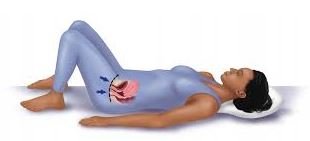
Bladder training aims to improve bladder control and reduce incontinence. It involves scheduled voiding, patient education, and exercises to strengthen the pelvic floor muscles.
Teaching Patients Bladder Training Techniques (e.g., Timed Voiding)
Bladder training often involves creating a structured schedule to encourage patients to void at specific intervals, gradually extending the time between voids to train the bladder to hold more urine.
- Timed voiding: The nurse works with the patient to develop a schedule, usually beginning with voiding every 2 hours, and slowly increasing the interval as the patient becomes more comfortable.
- Double voiding: Instruct the patient to void, then remain seated for a few minutes and attempt to void again to ensure complete bladder emptying.
- Fluid intake adjustments: Teach the patient to distribute fluid intake evenly throughout the day and to avoid excessive fluid intake before bedtime to prevent nocturia.
Assessing and Managing Incontinence (e.g., Pelvic Floor Exercises)
Incontinence can have a significant impact on a patient’s quality of life. Nurses should assess the type of incontinence and implement appropriate management strategies.
Types of incontinence:
- Stress incontinence: Occurs when the pelvic floor muscles are weakened, often due to pregnancy, childbirth, or aging. Patients may leak urine when sneezing, coughing, or lifting heavy objects.
- Urge incontinence: Characterized by a sudden, intense urge to urinate followed by involuntary loss of urine. This is often associated with overactive bladder.
- Overflow incontinence: Results from the bladder not emptying completely, leading to frequent dribbling.
- Functional incontinence: Occurs when physical or cognitive impairments prevent timely access to a toilet.
Pelvic Floor Exercises (Kegels)

Kegel exercises are designed to strengthen the pelvic floor muscles and help manage stress and urge incontinence. Nurses should:
- Teach proper technique: Instruct the patient to tighten the pelvic floor muscles as if they were stopping the flow of urine. Hold the contraction for 5-10 seconds, then relax for the same amount of time.
- Consistency: Encourage the patient to perform 10-15 repetitions, three times daily.
- Long-term benefits: Consistent practice of Kegels can improve bladder control over time.
Use of Incontinence Products and Skin Care
For patients with significant incontinence, the use of absorbent pads, adult briefs, and other incontinence products may be necessary.
Choosing the right products: Assist patients in selecting appropriate incontinence products based on their needs (e.g., absorbent briefs for heavy incontinence, pads for lighter leakage).
Skin care: Urinary incontinence can lead to skin breakdown and infection if not managed properly. Teach patients and caregivers to:
- Cleanse the skin: Use mild, pH-balanced cleansers after each episode of incontinence.
- Apply barrier creams: To protect the skin from moisture, apply a moisture barrier cream or ointment, especially in the perineal area.
- Change products frequently: Encourage frequent changing of absorbent products to maintain dryness and prevent skin irritation.
Bowel Elimination
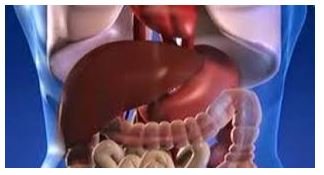
Bowel elimination is another critical aspect of care, focusing on maintaining normal bowel patterns, preventing constipation, and managing diarrhea and incontinence. Understanding normal versus abnormal bowel patterns and implementing interventions to promote regular bowel movements are key nursing responsibilities.
Bowel Pattern Assessment
Assessment of bowel patterns includes taking a detailed history of the patient’s usual bowel habits, identifying deviations from normal, and recognizing potential causes for constipation or diarrhea.
Assessing Normal vs. Abnormal Bowel Patterns
Normal bowel habits: For most people, normal bowel movements occur from three times a day to three times a week. A normal bowel movement should be well-formed, easy to pass, and not cause discomfort.
Factors affecting bowel patterns:
- Diet: A diet low in fiber or high in processed foods can lead to constipation, while excessive fiber intake can result in diarrhea.
- Fluid intake: Adequate hydration is necessary for soft stools. Dehydration can lead to hard, difficult-to-pass stools.
- Medications: Certain medications, such as opioids, antacids, or iron supplements, can cause constipation, while antibiotics may disrupt normal gut flora and cause diarrhea.
- Activity level: Physical activity stimulates peristalsis, aiding in regular bowel movements. Immobility can lead to constipation.
Identifying Causes of Constipation and Diarrhea (e.g., Diet, Medications)
i. Constipation:
- Causes: Common causes of constipation include insufficient dietary fiber, inadequate fluid intake, sedentary lifestyle, and certain medications (e.g., opioids, anticholinergics).
- Signs: Hard, dry stools, infrequent bowel movements (fewer than three times a week), and straining during defecation are common signs of constipation.
- Consequences: Chronic constipation can lead to complications like hemorrhoids, anal fissures, or fecal impaction.
ii. Diarrhea:
- Causes: Diarrhea may result from infections (e.g., viral, bacterial), food intolerances, medications (e.g., antibiotics), or inflammatory bowel conditions.
- Signs: Loose, watery stools, increased frequency of bowel movements, and abdominal cramping are typical of diarrhea.
- Consequences: Prolonged diarrhea can lead to dehydration, electrolyte imbalances, and skin breakdown due to frequent stooling.
Bowel Training Programs
Bowel training programs are designed to establish regular bowel habits, particularly for patients with chronic constipation, neurogenic bowel, or after surgery.
Implementing Programs to Establish Regular Bowel Movements
- Scheduled bowel movements: Encourage the patient to attempt bowel movements at the same time each day, typically 30 minutes after meals, as the gastrocolic reflex is strongest at this time.
- Use of natural stimulants: Promote a high-fiber diet (e.g., whole grains, fruits, and vegetables) to stimulate bowel motility, along with adequate hydration (at least 2-3 liters of water daily).
- Positioning: For bedridden patients, elevate the head of the bed to a semi-sitting position during bowel movements to simulate a natural position and facilitate defecation.
Using Laxatives, Enemas, and Stool Softeners Appropriately
i. Laxatives:
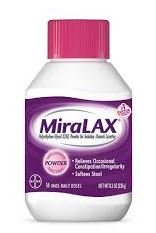
Used to treat constipation when non-pharmacological methods are insufficient. Types of laxatives include:
- Bulk-forming: (e.g., psyllium) Adds fiber to the stool, promoting bulk and regularity.
- Stimulant: (e.g., senna, bisacodyl) Increases peristalsis and bowel activity.
- Osmotic: (e.g., lactulose, polyethylene glycol) Draws water into the bowel to soften stool.
- Lubricant: (e.g., mineral oil) Coats the stool to ease passage.
ii. Enemas:
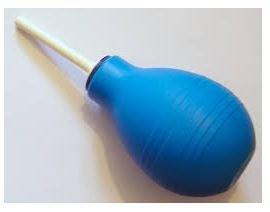
Administered to relieve constipation or prepare the bowel for diagnostic procedures. Types include:
- Cleansing enemas: Stimulates peristalsis through the infusion of fluid (e.g., saline, tap water).
- Oil retention enemas: Lubricates and softens the stool.
- Medication enemas: Administers medications like kayexalate for hyperkalemia or steroid enemas for inflammatory conditions.
iii. Stool softeners
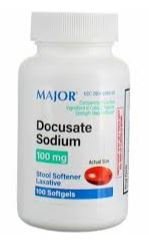
: (e.g., docusate sodium) Used to prevent hard, dry stools by increasing water content in the stool.
Managing Fecal Incontinence and Ensuring Patient Dignity
Fecal incontinence is a distressing condition that can greatly affect a patient’s quality of life. Nursing care focuses on managing incontinence, preventing skin breakdown, and preserving patient dignity.
- Assessment: Identify the underlying cause of incontinence (e.g., weak anal sphincter, neurogenic bowel, severe diarrhea).
- Bowel training programs: Implement a structured bowel training regimen, including scheduled toileting and the use of suppositories or enemas to stimulate bowel movements.
- Incontinence products: Use absorbent pads or briefs as needed. Ensure these products are changed frequently to prevent skin irritation.
- Skin care: Cleanse the perineal area thoroughly after each episode of incontinence using pH-balanced, non-irritating cleansers. Apply moisture barrier creams to protect the skin from breakdown.
- Patient dignity: Always respect the patient’s privacy during care. Offer emotional support and reassurance to maintain the patient’s self-esteem and dignity despite their condition.
Conclusion
Managing urinary and bowel elimination is a critical component of basic nursing care. By understanding the physiology of elimination, properly implementing catheterization and bladder training techniques, assessing bowel patterns, and establishing bowel training programs, nurses can significantly enhance patient outcomes. Proper education, monitoring for complications, and ensuring patient dignity are essential components of effective care. Through these efforts, nurses play a key role in maintaining the physiological integrity of patients and improving their quality of life.
